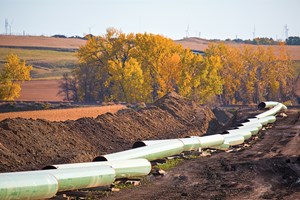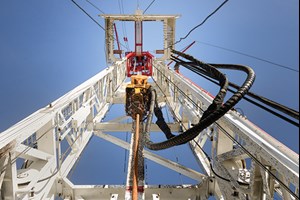Canadian E&P striving for economic recovery
As it has happened so many times in the past, one year has changed everything for the Canadian oil industry. Oil prices have crashed with no recovery in sight, and the pipeline access issue hasn’t improved. Alberta’s political landscape has shifted dramatically, and a looming federal election clouds the horizon.
In response to the prolonged oil slump, and the accompanying negative effect on their results, operators have slashed spending, postponed large-scale projects and laid off staff. The reduced spending has manifested itself in other ways, namely drilling levels and land sale revenues for provincial governments.
The only silver lining for producers is that the associated effects on Canada’s economy have also resulted in the Canadian dollar slumping to levels not seen since 2005, with experts predicting it will fall as low as 74 cents by early 2016. The upside for companies exporting oil to the U.S. is the lower Canadian dollar provides a significant boost to the bottom line, because they are paid in American dollars. A 74-cent Canadian dollar would translate into a 35% premium over current oil prices.

The pipeline situation hasn’t changed in any measurable way over the past year, as TransCanada Pipelines’ Keystone XL (Fig. 1) project appears to have hit seemingly insurmountable political obstacles in the U.S., and Canada’s own controversial proposal, Enbridge’s C$7.9-billion Northern Gateway project remains in limbo, awaiting Enbridge’s response to a 209-condition approval it secured from the National Energy Board in June 2014. The project is designed to transport oil sands crude from Alberta to the B.C. coast for shipment to Asian markets. Imported diluent would also be shipped back to Alberta.
However, hope has emerged that there may be sufficient interest and political support for the proposed Energy East pipeline project, which would ship Alberta crude to refineries in eastern Canada, providing another market for oil sands production, and reducing the country’s need for foreign crude supply.
Concerns that Alberta’s new provincial government would prove to be disastrous for the oil and gas industry have proven to be unfounded to date. The New Democratic Party (NDP), which had never earned more than 16 seats previously in Alberta’s legislature, unseated the Progressive Conservative Party in May, ending that party’s 44-year reign in the province. The NDP, led by Premier Rachel Notley, have initiated a review of Alberta’s royalty structure, which will double by 2017, the maximum price per tonne (from C$15 to C$30), charged under the provincial carbon tax, increased corporate and personal taxes and vowed to increase minimum wage to $15 per hour by 2017, a 47% increase from the current minimum of $10.20.
The industry has expressed reservations about the party’s perceived left-wing biases, but Notley has refused to make any substantial changes without consulting all parties, including industry. She has steadfastly defended pipelines, as have her environmental and energy ministers, who have all maintained that pipelines are the safest way to transport hydrocarbons.
Notley has also promised that any changes her administration makes will be done so in a manner that will protect Alberta’s fragile economy, which has been battered by the oil price slump. Aside from the impending royalty review, the industry is also carefully watching which direction the fledgling government will take on greenhouse gas emissions, long a key NDP focus, and central to criticism leveled against Canada on the world stage, particularly with respect to the development of Alberta’s oil sands, and critics of the Keystone XL project.
Alberta’s new premier was also signatory to a Canadian Energy Strategy, unanimously supported by all provinces and territories, that aspires to “ensure that regional, Canadian, and international infrastructure exists for the transportation and transmission of energy products to domestic and international markets.” Some environmental groups criticized the agreement due to its support of pipelines.
On the federal front, an unprecedented three-way race between the ruling Conservative Party, Liberal Party and New Democrats has provoked the expected jostling for position among the electorate. For their part, the Conservatives have opened the federal coffers, unveiling a variety of spending programs in advance of the election call.
Meanwhile, the hard realities of the economic difficulties the industry is under have manifested in poor financial results, prompting spending cuts and, in some cases, layoffs. Among those cutting staff in Canada are Suncor Energy, Royal Dutch Shell, Cenovus Energy, EnCana, Chevron Canada and Penn West Petroleum.
Enform, the safety association for the upstream oil and gas industry, has predicted that the oil and gas industry will cut almost 90,000 workers directly from their payrolls in 2015, while another 94,000 jobs indirectly will be lost.
And a report by energy analysts Wood Mackenzie estimates that oil and gas producers have shelved $200 billion in new spending this year globally, including some $50 billion in cuts to oil sands development in Alberta.
The financial troubles plaguing industry have also had a significantly negative impact on mergers and acquisitions in the energy sector, as well. According to
Crosbie and Company, there were 71 deals through the first quarter of 2014, valued at C$11.7 billion, and 51 deals worth $2.7 billion through the first three months of 2015, representing a decline of more than 330% year-over-year.
Significant deals in the first half include Cenovus’ divestment of its royalty business to The Ontario Teachers’ Pension Plan for C$3.3 billion, announced on June 30. The Heritage Royalty Limited Partnership holds 4.8 million gross acres of royalty interests and fee lands across western Canada.
In May, Crescent Point Energy acquired Legacy Oil & Gas Inc. for C$1.5 billion in a deal partially financed through a $600-million bought deal.
Curiously, Sayer Energy Advisors reports that the Canadian industry was reasonably successful raising capital in the first half of 2015. In addition to the Legacy deal, energy giants Cenovus (which raised C$1.5 billion in February) and EnCana (which raised $1.4 billion in March), industry raised $12.4 billion through June 2015, compared to $14.6 billion in the same period the
year before.
Nonetheless, spending has dropped precipitously. According to TD Securities, industry is expected to reduce spending $16.5 billion in 2015, while looking for ways to cut costs, in the event that oil prices take longer than expected to recover. Oil sands producers, always looking to cut costs, are particularly interested in lowering their long-term cost structure.
In the long term, technological innovation will be the centerpiece necessary for oil sands projects to be developed cost-efficiently, while meeting the growing demand to reduce the associated environmental impacts. The primary focus on the environmental front will be greenhouse gas emissions in the short to medium term, and the accumulation of wet tailings over the lifespan of the massive mining projects in northeastern Alberta.
The oil price slump and reduction in spending have hit planned oil sands development the hardest. Shell Canada has shelved its Jackpine and Pierre River mine expansion projects, as well as the proposed steam-assisted gravity drainage (SAGD) Carmen Creek project in northwestern
Alberta. Shell has stated that the projects will remain moribund until oil regains the WTI $80/bbl mark.
Meanwhile, CNRL has announced that its Horizon oil sands mine will exceed 250,000 bpd by 2017. Current capacity is 137,000 bpd.
Thailand’s PTTEP Canada Limited has applied to construct and operate the C$1 billion, 20,000-bpd Mariana Thornbury SAGD project south of Fort McMurray, Alberta, with construction planned to begin in 2017, and first oil in 2021.
Possibly the grimmest reminder of how severely oil prices have impacted activity in Canada is land sale activity. Industry payments to provincial governments for mineral rights through the first six months of 2015 have fallen to their lowest level since 1995, C$205.8 million, according to Daily Oil Bulletin records. This represents a 110% decrease from the $431.9 million collected in the first half of 2014. The six-month record was set in 2006, when governments took in $2.7 billion.

Alberta led the way, taking in 80% of the total amount, $165.1 million, 29% lower than last year, when the province brought in $231.6 million.
Spending in British Columbia plummeted in six months, to $6.8 million, compared to $89.9 million in 2014, a decrease of 92%. Both of these totals are dwarfed by the $609 million collected in 2010.
Saskatchewan also saw its revenue levels decrease to $32.7 million, down 70% from the $109.6 million received through six months last year.
Drilling numbers are also well off during the first six months of 2015, when a total of 2,602 wells were drilled, down 47% from last year’s 4,937. Of the total drilled in 2015, 63% targeted oil, according to Daily Oil Bulletin records. Overall, metres drilled declined 40%, indicating the trend toward longer completions has continued despite the lower activity.
In response to the bearish outlook, Canada’s industry associations have all downgraded their 2015 forecasts. In June, the Canadian Association of Oilwell Drilling Contractors (CAODC) revised its 2015 Western Canadian forecast downward for the second time this year, to 5,531 wells drilled, based on an average WTI price of $55. CAODC has also forecast that this level of drilling would result in the loss of more than 25,000 jobs.
In April, the Petroleum Services Association of Canada also revised its forecast downward to 4,780 wells, 53% lower than its initial 2015 forecast of 10,100 released in late 2014.
The Canadian Association of Petroleum Producers estimates that 5,700 wells will be drilled in 2015, down 57% from the 13,274 wells the group reported for 2014, Fig. 2. ![]()
- Coiled tubing drilling’s role in the energy transition (March 2024)
- Shale technology: Bayesian variable pressure decline-curve analysis for shale gas wells (March 2024)
- The last barrel (February 2024)
- What's new in production (February 2024)
- Using data to create new completion efficiencies (February 2024)
- Digital tool kit enhances real-time decision-making to improve drilling efficiency and performance (February 2024)
- Applying ultra-deep LWD resistivity technology successfully in a SAGD operation (May 2019)
- Adoption of wireless intelligent completions advances (May 2019)
- Majors double down as takeaway crunch eases (April 2019)
- What’s new in well logging and formation evaluation (April 2019)
- Qualification of a 20,000-psi subsea BOP: A collaborative approach (February 2019)
- ConocoPhillips’ Greg Leveille sees rapid trajectory of technical advancement continuing (February 2019)


